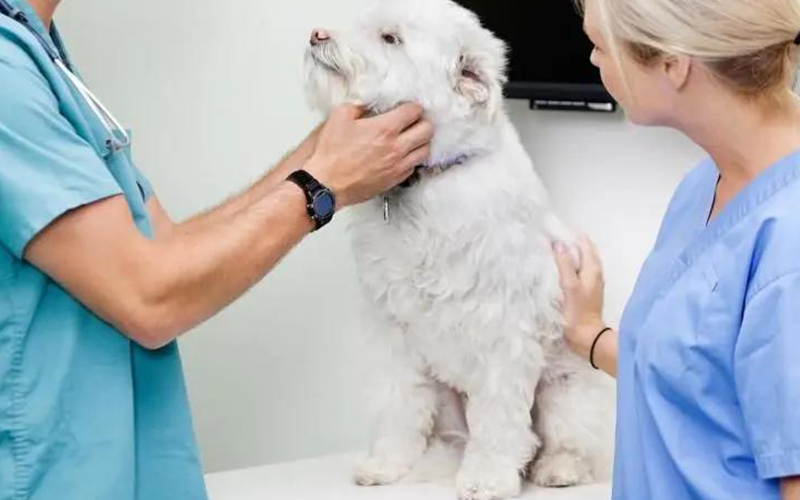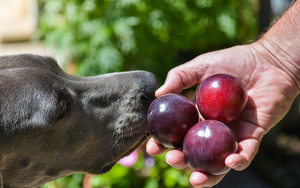Red Spots on Dog Skin: Causes, Symptoms, and Effective Treatments

Introduction
Seeing red spots on your dog’s skin can be concerning for any pet owner. These spots may appear suddenly or develop over time, signaling anything from minor irritations to serious health conditions. Understanding the potential causes, symptoms, and treatment
options is essential to keeping your furry friend healthy and comfortable. In this article, we’ll explore the common reasons for red spots, how to recognize warning signs, and effective treatments to ensure your dog gets the care they deserve.
What Are Red Spots on a Dog’s Skin?
Red spots on a dog’s skin are areas of inflammation that can range from tiny dots to larger patches. They may appear flat or raised, and their texture can vary from smooth to rough. Often, these spots are accompanied by other symptoms such as itching,
hair loss, or discharge. Paying attention to these signs helps identify the underlying cause.
Common Causes of Red Spots on Dog Skin
1. Allergies
- Food Allergies: Ingredients like chicken, beef, or dairy can trigger allergic reactions, leading to skin inflammation.
- Environmental Allergies: Pollen, dust mites, and mold are common culprits.
- Flea Allergy Dermatitis: Dogs allergic to flea saliva may develop red, itchy spots after a bite.
2. Parasites
- Fleas and Ticks: Bites from these parasites often cause red, inflamed areas.
- Mites: Conditions like mange can lead to severe itching and red patches.
3. Infections
- Bacterial Infections: Often caused by scratches or wounds, these infections can result in red, oozing spots.
- Fungal Infections: Ringworm and yeast infections are common and often appear as red, circular patches.
4. Hot Spots (Acute Moist Dermatitis)
Hot spots are localized areas of skin irritation caused by excessive licking, chewing, or scratching. They can become infected if untreated.
5. Skin Irritations
- Chemical Exposure: Contact with harsh shampoos or cleaning agents can irritate the skin.
- Plant Contact: Poison ivy or other toxic plants may leave red marks.
6. Underlying Health Conditions
- Autoimmune Disorders: Conditions like lupus or pemphigus can manifest as skin lesions.
- Hormonal Imbalances: Issues like hypothyroidism can make dogs prone to skin problems.
Symptoms to Watch For
Besides red spots, be alert for:
- Excessive scratching or licking
- Hair loss around affected areas
- Swelling or raised bumps
- Discharge (clear, yellow, or bloody)
- Foul odor from the skin
- Behavioral changes like restlessness or lethargy
These signs can help your veterinarian narrow down the diagnosis.
Diagnosing the Cause of Red Spots
A proper diagnosis is crucial for effective treatment. Your veterinarian may:
- Perform a physical examination.
- Conduct skin scrapings or biopsies.
- Use allergy tests to identify triggers.
- Take blood samples to rule out underlying conditions.
Accurate identification ensures targeted treatment and prevents recurring issues.
Treatment Options
1. Topical Treatments
- Antibiotic Creams: For bacterial infections.
- Antifungal Ointments: Effective against yeast or ringworm.
- Hydrocortisone Creams: Reduce inflammation and itching.
2. Medications
- Antihistamines: For allergy relief.
- Corticosteroids: To manage severe inflammation.
- Antibiotics or Antifungal Pills: For systemic infections.
3. Lifestyle Changes
- Switching to hypoallergenic diets for food allergies.
- Regular grooming to minimize flea and tick exposure.
- Using medicated shampoos to soothe irritated skin.
4. Parasite Control
Monthly flea and tick preventatives can keep parasites at bay. Natural remedies like diatomaceous earth may also help.
5. Home Remedies
- Oatmeal Baths: Soothe itching and inflammation.
- Coconut Oil: Moisturizes and protects the skin.
- Chamomile Tea Compresses: Relieves irritation.
Always consult a veterinarian before trying home remedies to ensure they’re safe and appropriate for your dog.
Preventing Red Spots on Your Dog’s Skin
-
Maintain Good Hygiene
Regular baths with dog-specific shampoos help keep the skin healthy. -
Use Preventative Measures
Apply flea and tick treatments consistently and clean your pet’s bedding frequently. -
Balanced Diet
Provide a high-quality, balanced diet rich in essential fatty acids to support skin health. -
Avoid Allergens
Minimize exposure to known allergens and use air purifiers to reduce environmental irritants. -
Routine Veterinary Check-ups
Regular visits help catch potential issues early, preventing serious complications.
When to See a Veterinarian
If the red spots persist for more than a few days or are accompanied by symptoms like fever, lethargy, or open wounds, seek professional help immediately. Delayed treatment can lead to secondary infections or chronic conditions.
Conclusion
Red spots on your dog’s skin can stem from various causes, ranging from minor irritations to serious health concerns. Understanding these potential triggers, recognizing symptoms, and taking prompt action is key to keeping your dog happy and healthy.
With the right care and preventative measures, you can minimize skin issues and ensure your furry friend lives a comfortable life.
FAQs
1. Can I use human creams on my dog’s skin?
No, always consult your veterinarian before applying any topical treatment designed for humans.
2. Are red spots contagious to other pets or humans?
Some conditions like ringworm are contagious, while others are not. A vet can clarify the risks.
3. How long does it take for red spots to heal?
Healing time varies depending on the cause and treatment. Minor irritations may resolve in days, while infections might take weeks.







